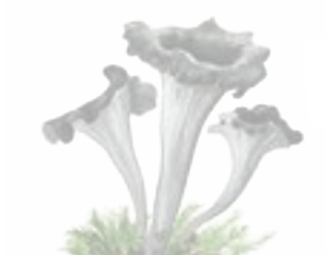

AKA: Bearded tooth, Lion's Mane
If you’ve been reading this column for any length of time you already know to scan the trees as well as the ground any time you are mushroom hunting. This is a very distinctive fungus and another good one for you beginners to learn as there are no known poisonous mushrooms in the family Hydnaceae. Once you’ve discovered the culinary pleasure of bearded tooth, you may forget to scan the ground.
Bearded tooth occurs on living deciduous trees mostly oak, maple and beech. Now (August through November) is the time for it to fruit. Look for white to cream colored, small to medium (4 to 10 inches diameter) round to oval pom poms growing on the sides of trees. A closer examination will reveal a toothed fungus with the teeth forming a white beard-like mass. There are two look a likes in our area, H. coralloides and H. ramosum, both of which grow on dead of dying trees. Don’t worry; all three are edible and choice.
If you are going to make a meal of bearded tooth, choose young tender specimens. Young specimens are choice, but older specimens can be tough and sour tasting. The base can be very tough and rooting, so take your knife and trim off the tender part. In my opinion bearded tooth is like chicken mushrooms in that it benefits from long slow cooking. Try it in a slow cooker stew rather than a stir fry. If you have the incredible luck to find enough to preserve try either sautéing in butter and freezing or pressure canning.
The most productive time of the mushroom season is upon us. The diversity and numbers of mushrooms can be mystifying. Pick what you know and enjoy nature’s buffet. Just remember the cardinal rule, “When in doubt, toss it out!”. Have fun out there.
Steve Peek
Field mycologist and long standing member of the Asheville Mushroom
(Images by: Mushroom Mountain)






